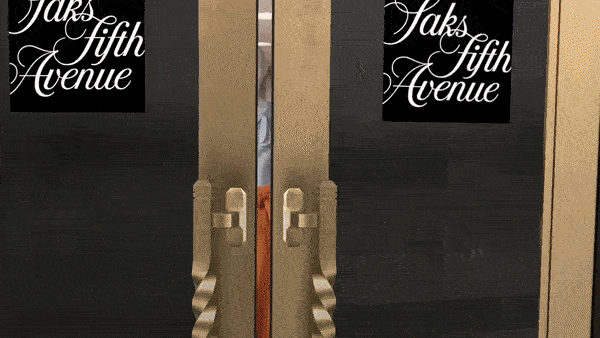Mastercard debuted a new augmented reality shopping experience that incorporates Masterpass and Identity Check Mobile with iris authentication. The tech was developed with Qualcomm Technologies and Osterhout Design Group and is being demoed at the Las Vegas Money 20/20 conference through the Saks Fifth Avenue brand.
Mastercard’s new AR experience has been designed to work with ODG’s new R9 smartglasses, allowing shoppers to view digital representations of products before they commit to a purchase, learn more about what they’re buying, see additional options not available in the physical location and get instant recommendations or other information relevant to their unique experience.
When done shopping, users can pay for items using Masterpass, which will first authenticate the user’s iris using Qualcomm Technologies’ iris authentication. The shopper then selects a card from their Masterpass-enabled wallet and completes the purchase by selecting the Masterpass button on the screen. Items can be taken home from the store or shipped, depending on availability.
This demo comes on the heels of Masterpass exploring virtual reality purchases through a Swarovski shopping experience earlier this month.
Sherri Haymond, executive vice president of digital partnerships at Mastercard, told AListDaily that this new technology taps into the radical shifts that the world of commerce is undergoing.
“ODG’s smartglasses offer a hands-free, heads-up and body position independent form factor that gives users a richer, more immersive experience in AR,” Haymond said. “This allows people to more fully engage with the world around them, on the go. This technology allows retail brands to engage with their customers in new ways—driving sales and bringing foot traffic back in store. It unlocks new ways for brands to reach and engage with consumers—to differentiate their brand, build loyalty and drive sales.”
Ralph Osterhout, founder and CEO for ODG, said just as individual brands have shifted a significant and growing portion of their media spend from traditional TV into mobile and digital advertising, AR smartglasses offer brands a new platform to reach consumers, in an even more contextual real-time way.
“We have heard from many marketing agencies and brands who are interested in developing unique memorable consumer experiences at events with our AR smartglasses as a first step in familiarizing themselves with the platform and its capabilities,” Osterhout told AListDaily. “We expect these activities to grow rapidly in the coming years. Retailers are starting to show interest in installing an experience like this Saks demonstration as early as 2018.”
According to an April Salsify study, 77 percent of shoppers use a mobile device while shopping in stores to research availability and pricing.
“Many high-end retailers like Bonobos, Paul Evans, Marc Jacobs and Restoration Hardware are rethinking inventory strategies to reduce footprint and cut costs—moving to a ‘boutique-showroom’ approach, stocking fewer items in store and offering a broader selection through online,” Haymond explained. “The AR smartglasses experience allows the shopper to organically merge the benefits of retail and online shopping together, giving them access to further inventory that may not be available in store while maintaining that richer in-store experience.”
There is also a growing trend among shoppers of buying “outfits” rather than items, which has allowed upstarts like StitchFix, TrunkClub, Wantable and MM.LaFleur to flourish. Haymond said this new technology allows shoppers to create outfits with personalized recommendations pushed directly to them via iris scanning on the glasses.
In the wake of the hacks on Target, Home Depot and Neiman Marcus, retailers are struggling to protect their cash-register systems from malware looking to hack shoppers’ credit card information. Haymond said this experience makes payment and delivery more secure and seamless for both retailers and shoppers.
Given ODG’s limited consumer reach today, the burgeoning AR market across Apple and Google devices opens up more immediate opportunities for Mastercard.
“Mastercard sees additional opportunities to leverage AR and seamless payments to enhance the consumer experience in areas like home services,” Haymond said. “Imagine a home-decorating experience, for example, where you can design a room in your home and then close the loop on the entire process by enabling transactions right on the device.”
Haymond believes AR and AI will open new opportunities for both consumers and retailers, including the creation of a new world of real-time impulsive online shopping, allowing brands and retailers to even more accurately tailor offers and messages to consumers contextually.

